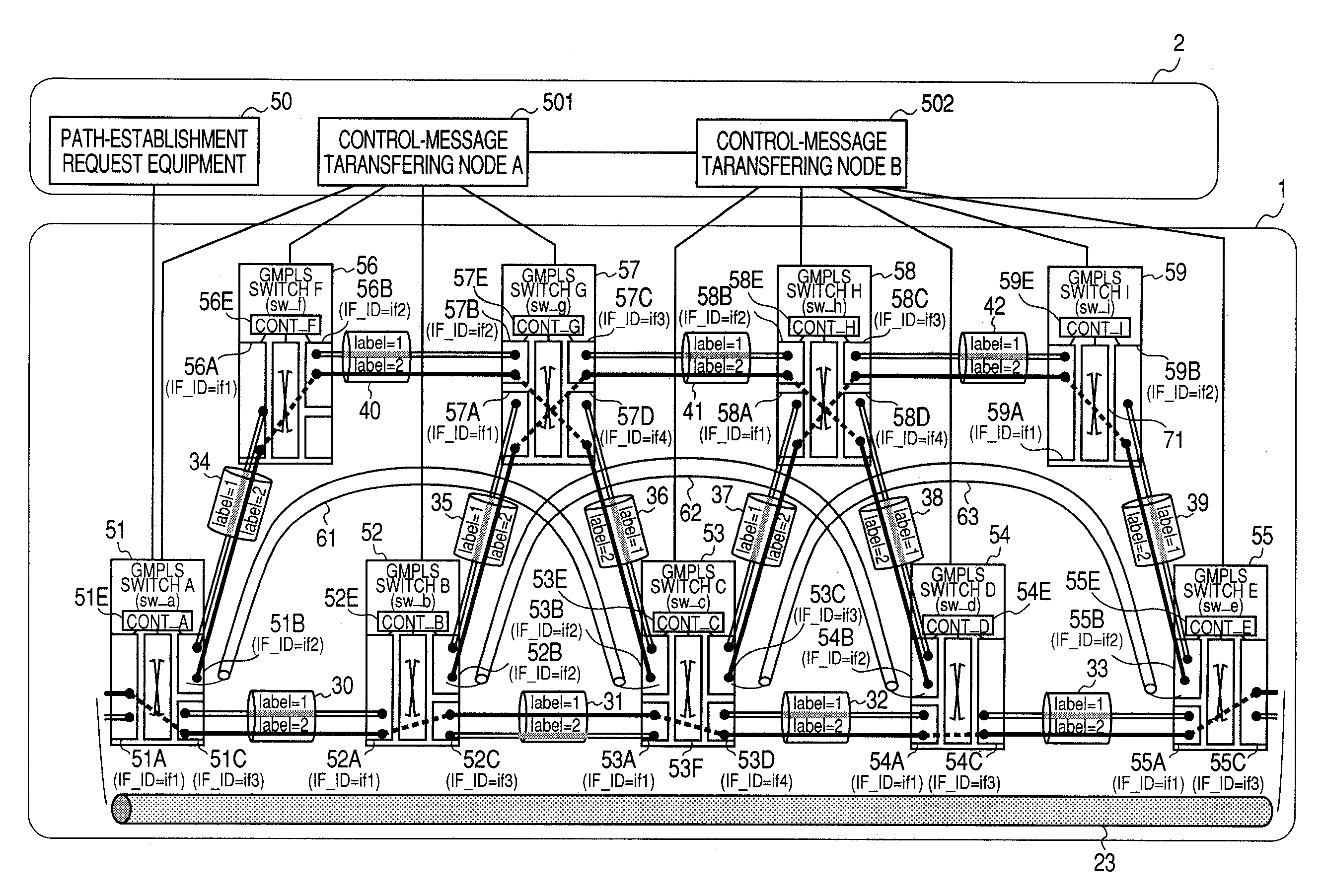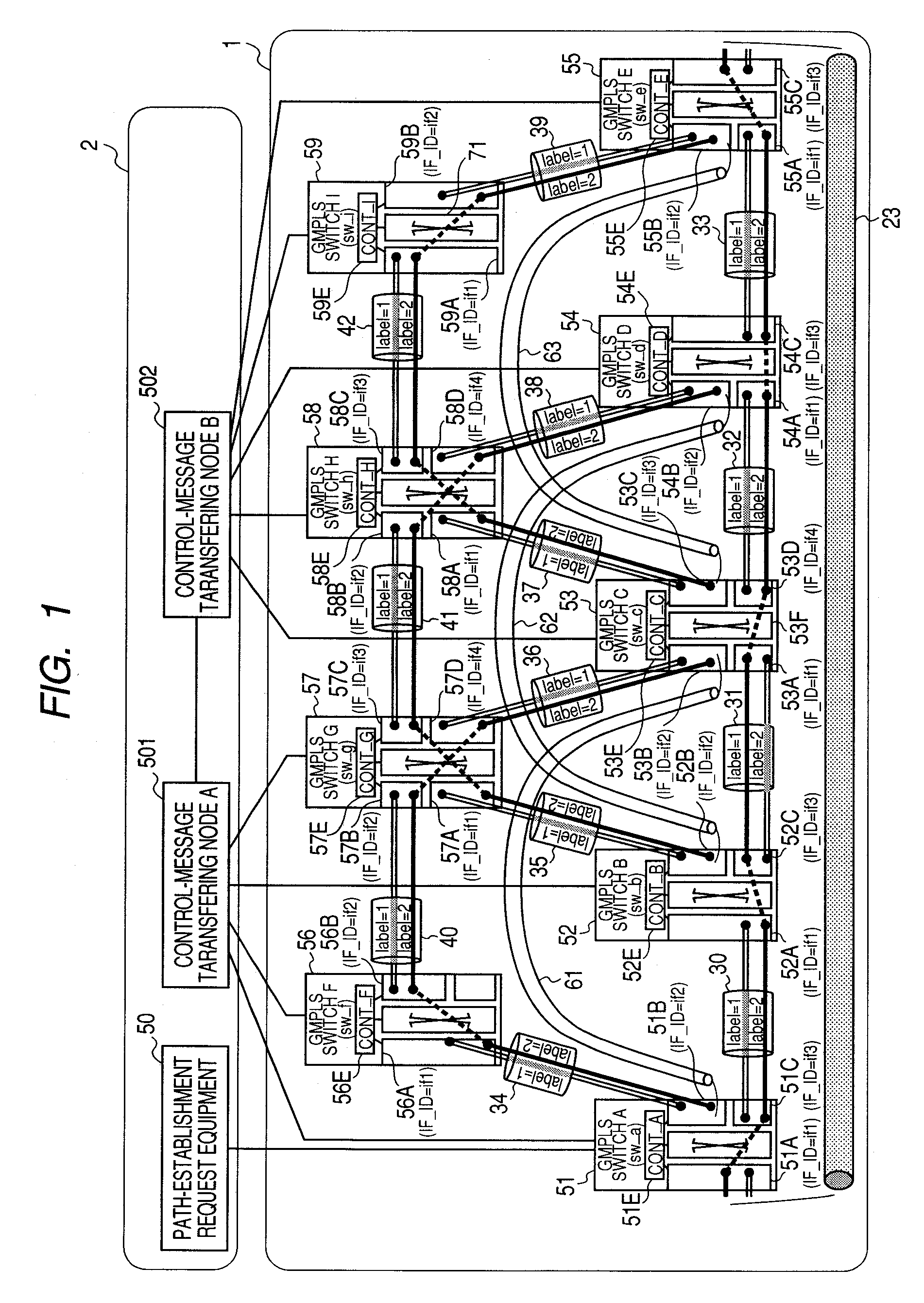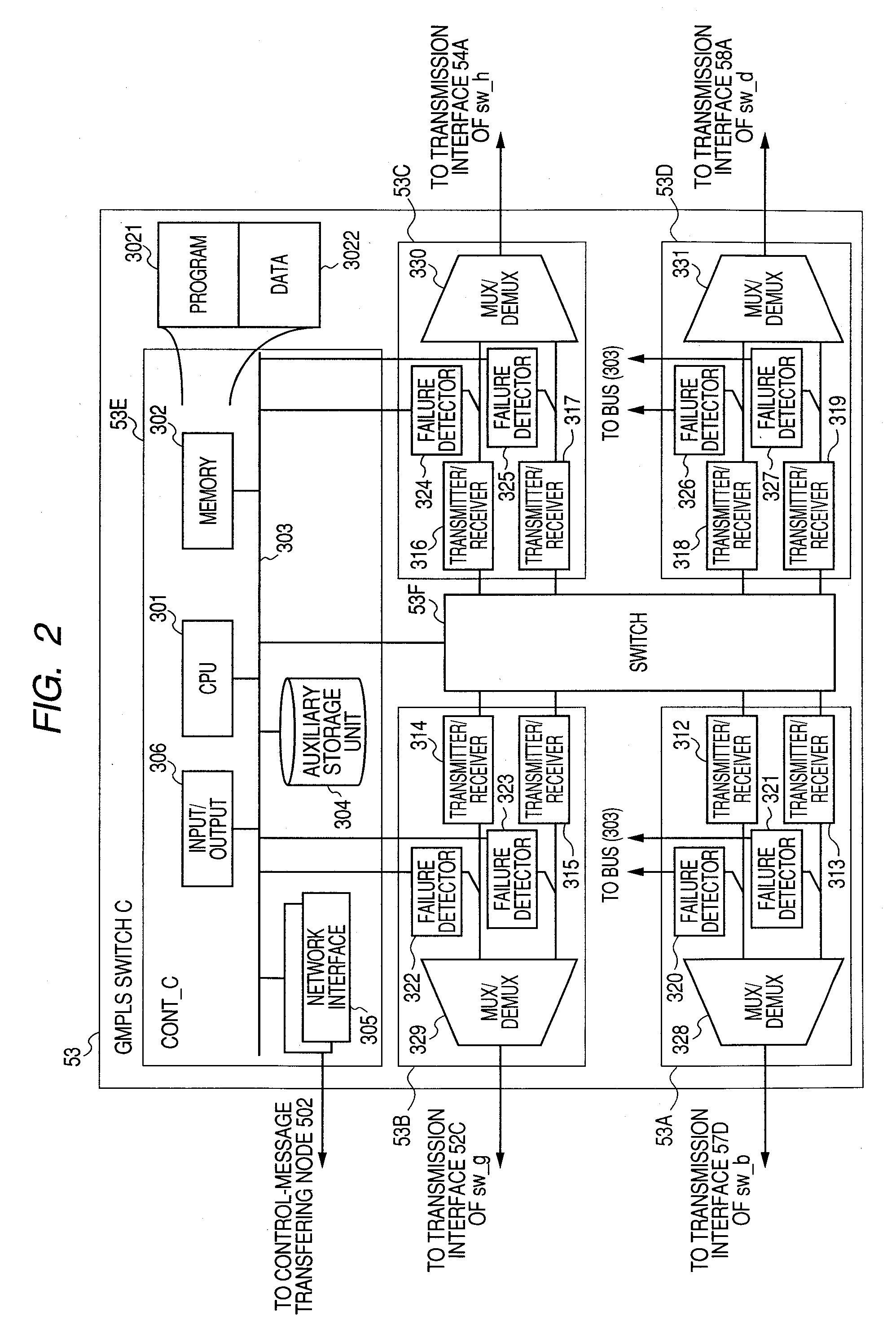Routing failure recovery mechanism for network systems
a network system and failure recovery technology, applied in the field of communication path multiple failure recovery system, can solve the problems of processor canceling switching, communication is disconnected, and each network unit cannot know the state of each segmen
- Summary
- Abstract
- Description
- Claims
- Application Information
AI Technical Summary
Benefits of technology
Problems solved by technology
Method used
Image
Examples
first embodiment
[0066]At first, a description will be made for a configuration of a communication network system in a first embodiment of the present invention with reference to FIG. 1.
[0067]A network 1 shown in FIG. 1 consists of a plurality of network units 51 to 59 connected to each another through transmission lines 30 to 42. In this first embodiment, the network 1, which consists of 9 network units and 13 transmission lines, may be set freely for the number of network units and the topology. In addition, each transmission line between network units is enabled for bidirectional communications, but the transmission line can be substituted for optical fibers to be used as a pair of transmission media for upstream and downstream communications.
[0068]Each of the communication paths 61 to 63 is established upon starting exchanges of GMPLS generalized RSVP-TE messages among the network units 51 to 59 through a control message transferring network 2. In this first embodiment, 3 2-hop communication pat...
second embodiment
[0280]Next, a second embodiment of the present invention will be described.
[0281]In the first embodiment described above, the GMPLS generalized RSVP-TE is used as a signaling program. However, the present invention can also use another protocol such as the GMPLS CR-LDP, or the like.
[0282]FIG. 30 shows a message format used by a network system in this second embodiment of the present invention.
[0283]Just like the network system in the first embodiment, the network system in this second embodiment uses a segment generalized object for each RESV message to enable segment information to be notified among network units.
[0284]In FIG. 9 of the first embodiment, each object is defined individually. In FIG. 30 of this second embodiment, each segment is stored in the same container. Each of the containers (2503 to 2504) includes items of segment ID (25031), segment's starting point node information (25032), and segment's ending point node information (25033).
[0285]A container includes primary...
PUM
 Login to View More
Login to View More Abstract
Description
Claims
Application Information
 Login to View More
Login to View More - R&D
- Intellectual Property
- Life Sciences
- Materials
- Tech Scout
- Unparalleled Data Quality
- Higher Quality Content
- 60% Fewer Hallucinations
Browse by: Latest US Patents, China's latest patents, Technical Efficacy Thesaurus, Application Domain, Technology Topic, Popular Technical Reports.
© 2025 PatSnap. All rights reserved.Legal|Privacy policy|Modern Slavery Act Transparency Statement|Sitemap|About US| Contact US: help@patsnap.com



